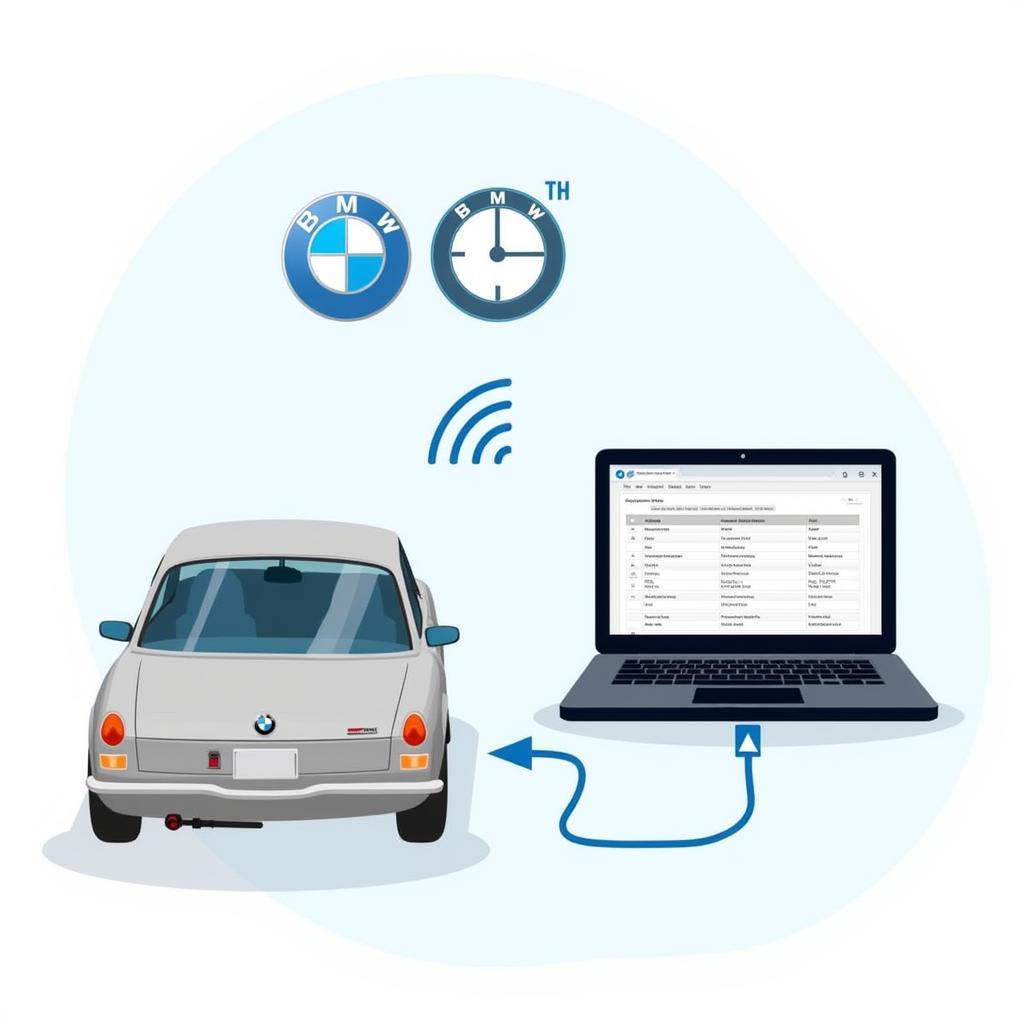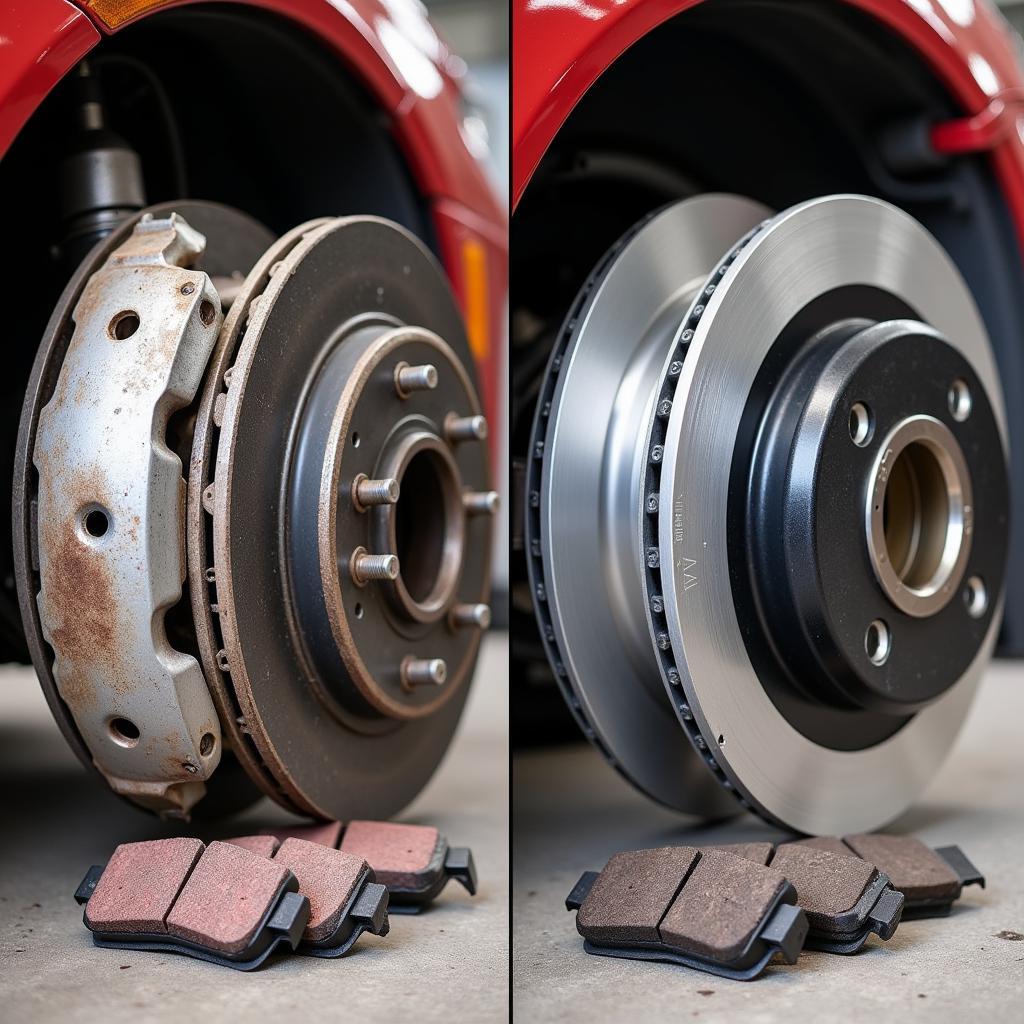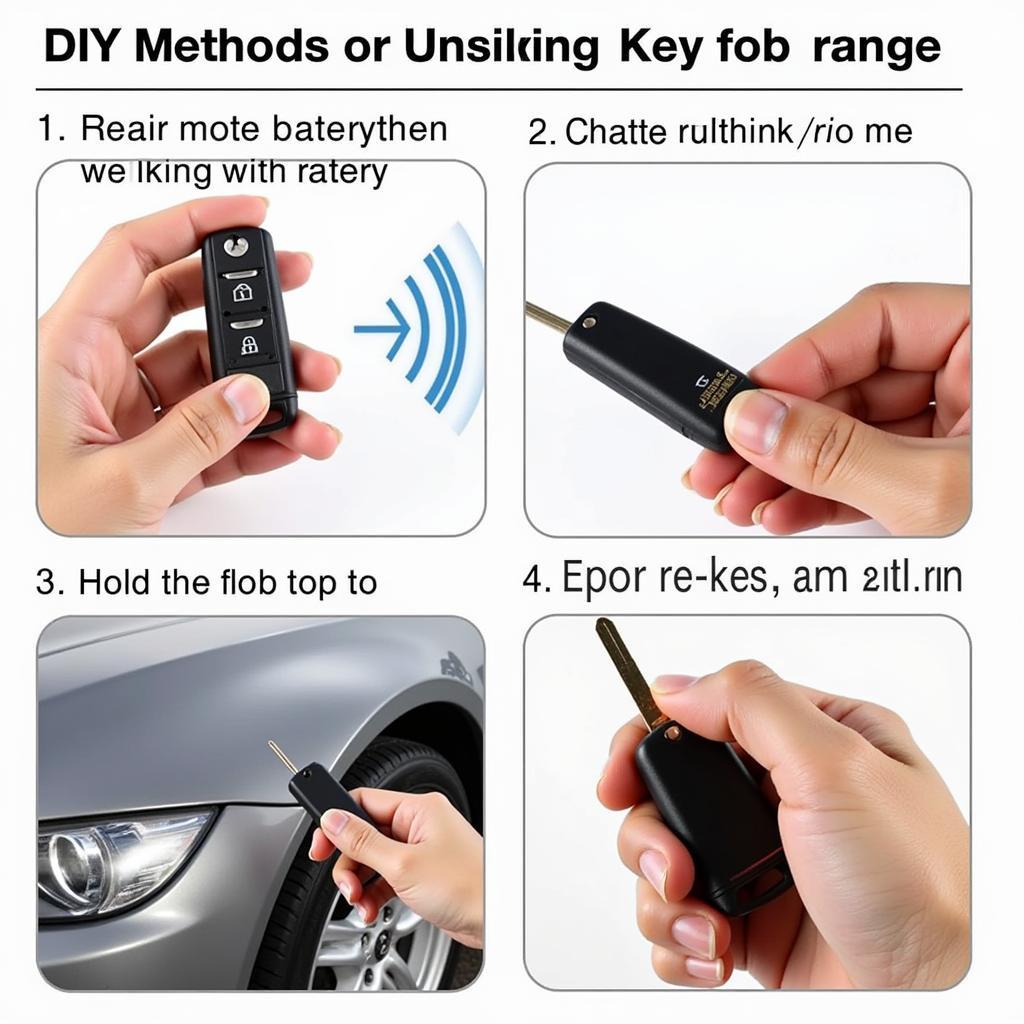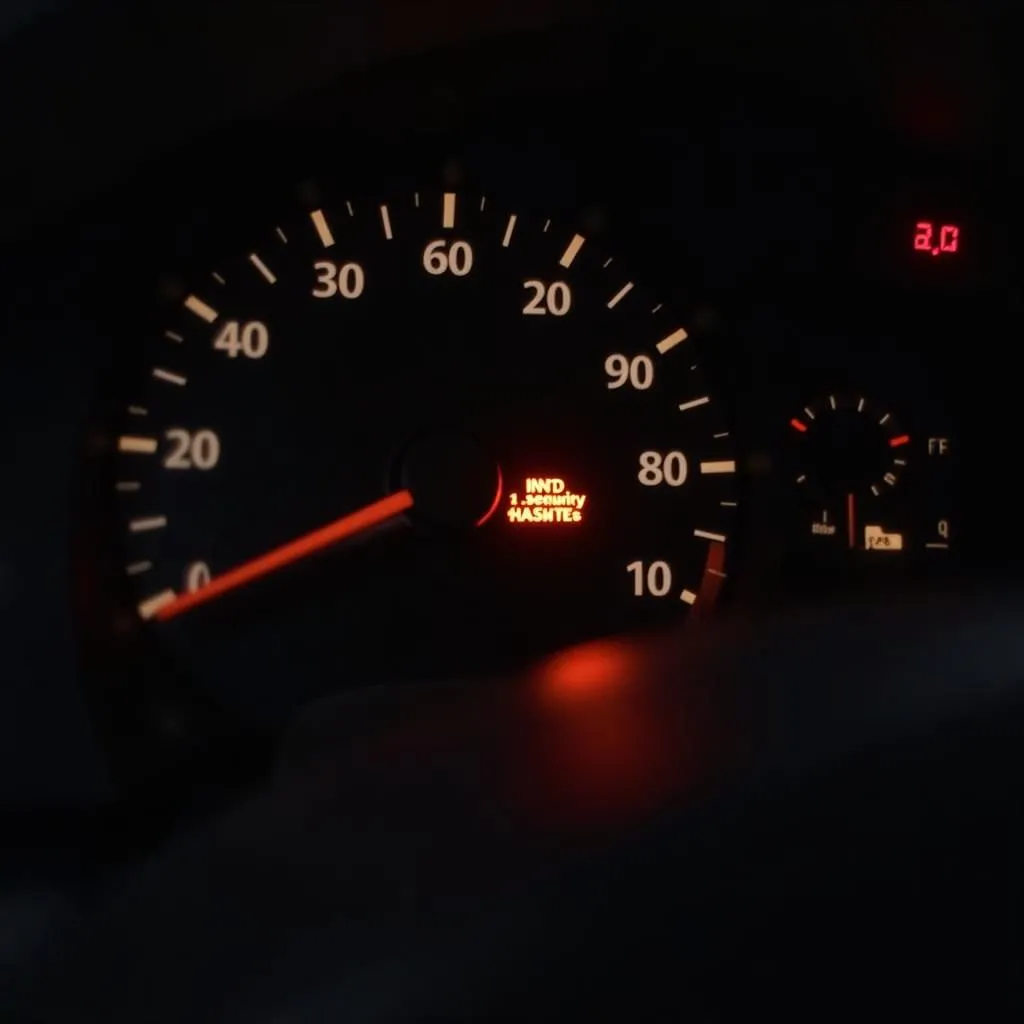The brake pad warning light is a crucial safety feature in your BMW. When it illuminates, it signals potential wear and tear on your brake pads, urging you to address the issue promptly. Ignoring this warning light could lead to further damage, costly repairs, and even compromise your safety on the road.
This comprehensive guide delves into the common causes of a BMW brake pad warning light, potential solutions, and professional remote diagnostic and programming services that can help get you back on track.
Decoding Your BMW Brake Pad Warning Light
The brake pad warning light, often appearing as a circle with dashed lines encasing a parenthesis on each side, is designed to alert you when the brake pad thickness falls below a safe level. Modern BMWs are equipped with sensors within the brake pad system that constantly monitor their condition. When the sensor detects wear beyond a predetermined limit, it triggers the warning light on your dashboard.
Common Causes of a Triggered Warning Light
While worn brake pads are the most common culprit, several other factors could trigger the warning light:
- Worn Brake Pads: As your brake pads wear down over time, the sensor embedded within them eventually comes into contact with the brake rotor, completing a circuit and illuminating the warning light.
- Faulty Brake Pad Sensors: Like any other electrical component, brake pad sensors can malfunction. A short circuit, broken wire, or corrosion can disrupt the signal, causing a false warning.
- Issues with Brake Fluid: Low brake fluid, often caused by a leak in the brake lines, can impact brake pad performance and trigger the warning light.
- Problems with the ABS System: A malfunctioning Anti-lock Braking System (ABS) can also trigger the brake pad warning light as it’s intricately linked to your BMW’s overall braking system.
What to Do When Your BMW Brake Pad Warning Light Turns On
The appearance of the brake pad warning light necessitates prompt action. Here’s a step-by-step guide on how to proceed:
- Assess Your Driving: If you notice any unusual noises during braking, such as grinding or squealing, or if your car pulls to one side when braking, it’s crucial to stop driving immediately and arrange for your BMW to be towed to a trusted mechanic or dealership.
- Check Your Brake Fluid: If your braking feels normal apart from the warning light, carefully park your car and check the brake fluid level. Refer to your owner’s manual for the location of the brake fluid reservoir and instructions on checking the fluid level. If the fluid level is low, there might be a leak.
- Schedule an Inspection: Whether you notice additional symptoms or not, a illuminated brake pad warning light warrants professional attention. Schedule an appointment with a qualified BMW mechanic or dealership to diagnose the issue accurately.
Remote Diagnostic and Programming Services: A Convenient Solution
Modern automotive technology has paved the way for convenient solutions like remote diagnostics and programming. Reputable service providers can connect to your BMW’s onboard computer system remotely to:
- Retrieve Diagnostic Trouble Codes: These codes provide specific insights into the potential causes of the brake pad warning light, allowing for targeted repairs.
- Analyze Sensor Data: Technicians can analyze data from the brake pad sensors to assess their functionality and determine if they are accurately reporting wear.
- Perform Software Updates: In some cases, software glitches within your BMW’s braking system could trigger the warning light. Remote programming allows technicians to install the latest software updates, potentially resolving the issue without requiring a physical visit.
 BMW remote diagnostics
BMW remote diagnostics
The Importance of Addressing Brake Pad Issues
Timely attention to your BMW’s brake pad warning light is essential for several reasons:
-
Safety First: Worn brake pads significantly reduce your braking efficiency, increasing the risk of accidents, especially in emergency situations.
-
Prevent Costly Repairs: Addressing brake pad wear early can prevent damage to other brake components like rotors and calipers, which are significantly more expensive to replace.
-
Ensure Optimal Performance: Maintaining your BMW’s braking system in top condition ensures optimal braking performance and a smoother, safer driving experience.
“Regular brake inspections and timely replacement of worn components are not just maintenance tasks, but crucial investments in your safety and the longevity of your BMW,” says Jake Carter, a senior BMW technician with over 15 years of experience.
Frequently Asked Questions
Q: Can I continue driving with the brake pad warning light on?
A: While you might be able to drive for a short distance, it’s highly discouraged. Driving with worn brake pads compromises your safety and can lead to further damage to your braking system.
Q: How much does it cost to replace BMW brake pads?
A: The cost varies depending on the model, labor costs in your area, and whether additional components need replacement. Contact your trusted mechanic or dealership for a precise quote.
Q: How often should I replace my BMW brake pads?
A: Brake pad lifespan varies greatly depending on driving style and conditions. As a general rule, it’s recommended to have your brake pads inspected every 10,000 miles.
Q: Can I replace BMW brake pads myself?
A: While possible, replacing brake pads is a complex procedure that requires specialized tools and knowledge. For your safety and to ensure the job is done correctly, it’s best to leave it to trained professionals.
 BMW brake pads and rotors
BMW brake pads and rotors
Ignoring Your BMW Brake Pad Warning Light Can Be Costly
A glowing brake pad warning light is your BMW’s way of signaling a potential issue that needs attention. By understanding the causes, taking prompt action, and exploring convenient solutions like remote diagnostics, you can ensure optimal braking performance and, most importantly, safeguard yourself and others on the road.


